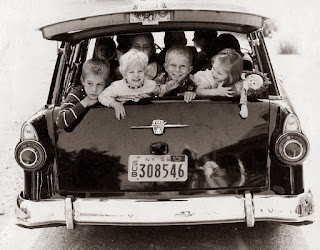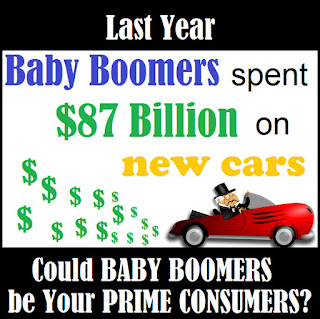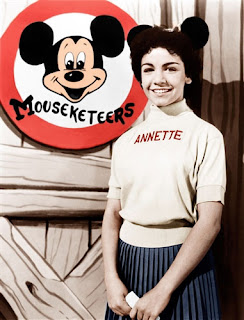.

Baby Boomers - Snippets of our Golden Age
APRIL 3, 2018
Millennials
approach Baby Boomers as America’s largest generation in the electorate
Millennials, who are projected to surpass Baby Boomers next
year as the United States’ largest living adult generation, are also
approaching the Boomers in their share of the American electorate.
As of November 2016, an estimated 62 million Millennials
(adults ages 20 to 35 in 2016) were voting-age U.S. citizens, surpassing the 57
million Generation X members (ages 36 to 51) in the nation’s electorate and
moving closer in number to the 70 million Baby Boomers (ages 52 to 70),
according to a new Pew Research Center analysis of U.S. Census Bureau data.
Millennials comprised 27% of the voting-eligible population in 2016, while
Boomers made up 31%.
In 2016, Generation X and members of the Silent and Greatest
generations (ages 71 and older) comprised 25% and 13% of the electorate,
respectively. In addition, the oldest members of the post-Millennial
generation (those born after 1996) began to make their presence known for the
first time – 7 million of these 18- and 19-year-olds were eligible to vote in
2016 (comprising just 3% of the electorate).
The Baby Boomer voting-eligible population peaked in size at
73 million in 2004. Since the Boomer electorate is declining in size and the
Millennial electorate will continue to grow, mainly through immigration and
naturalization, it is only a matter of time before Millennials are the largest
generation in the electorate.

While the growth in the number of Millennials who are
eligible to vote underscores the potential electoral clout of
today’s young adults, Millennials remain far from the largest generational bloc
of actual voters. It is one thing to be eligible to vote and another thing to
actually cast a ballot.
Measuring voter turnout is not an exact science. The Census
Bureau’s November voting supplements are a
standard data source for illuminating the demographics of voting. Census
estimates of voter turnout are based on respondent self-reports of whether they
voted in the recent election.
Based on these estimates, Millennials have punched below
their electoral weight in recent presidential elections. (For a host of
reasons, young adults are less likely to votethan their older
counterparts.)
Given the historical context of relatively low voter turnout
among young adults, Millennials seemed ascendant in the 2008 election when
50% of eligible Millennials voted. By comparison, 61% of the Generation X
electorate reported voting that year, as did even higher percentages of Boomer
and Silent Generation eligible voters. In 2008 Millennials comprised 18% of the
electorate, but as a result of their relatively low turnout (compared with
older generations) they made up only 14% of Americans who said they voted.

Millennial turnout was less impressive in 2012, when 46% of
eligible Millennials said they had voted. Since the oldest Millennials were age
31 in 2012 (as opposed to 27 in 2008), the expectation might have been that
turnout would have edged higher. After all, an older, more mature, more
“settled” age group presumably should turn out at higher rates. This
underscores that young adult turnout depends on factors besides demographics:
the candidates, the success of voter mobilization efforts, satisfaction with
the economy and the direction of the country.
Turnout among Millennials was higher in 2016 – 51%. But
again, that’s significantly lower than the 61% of the electorate who voted. In order for
their voting clout to match their share of the electorate, roughly 61% of
Millennials would have to have turned out to vote in 2016.
While it may be a slam-dunk that Millennials will soon be
the largest generation in the electorate, it will likely be a much longer time
before they are the largest bloc of voters.
The Millennial generation continues to grow as young immigrants expand its ranks. Boomers – whose generation was defined by the boom in U.S. births following World War II – are older and their numbers shrinking as the number of deaths among them exceeds the number of older immigrants arriving in the country.
Now this is what Pew did not tell you.
America's first Baby Boomer Presidents
America's first Baby Boomer Pot Smoking Presidents
Other Boomer Highlights
Deloitte Insight
Research
Baby Boomers, a
frequent punching bag among social critics for their excesses, will not head
into the sunset quietly (see “The generations defined” by the Pew Research
Center). In 2029, the year when the last Boomer will have turned 65, the US
Census Bureau projects that there will still be over 61 million Boomers—about 17.2 percent of the projected US
population.
They will continue to wield immense influence over every aspect of
American society for at least another two decades. As their needs and
circumstances evolve, Boomers may yet again challenge conventional wisdom and
redefine their role in the American economy. Financial firms would do well to
take notice.
Okay, so if the Baby Boomers possess over 50% of the wealth
in this nation today, and by 2030 when the last of the Boomers has just turned
65 they will continue to wield immense influence over every aspect of American society,
as a little over 17% of Americans will be Baby Boomers yet they will still
control over 45% of all American wealth, then why are the Boomers being largely
ignored in media advertising.




They may be ignored on Main Street but they will still
control the purse strings of our nation long into the future. So most of those people in a position to
influence our future, Baby Boomers, who suffered through what I believe was one
of the most divisive, toughest, and unstable ages in our history and survived, will
be here to guide us.
Here are some of my favorite people of the Boomer generation. Here is a list of them, you match the names to the pictures.
Juliette Binoche Sandra Bullock
Helena Bonham Carter Diana, Princess of Wales
Enya Gloria
Estefan
Chris Evert Peggy Fleming
Jodie Foster Whitney Houston
Holly Hunter Catherine Zeta-Jones
Shelley Long Sophie Marceau
Reba McEntire Kathryn Morris
Olivia Newton-John Michelle Pfeiffer
Annie Potts Linda
Ronstadt
Gabriella Sabatini Emma
Thompson
Marisa Tomei





















































































